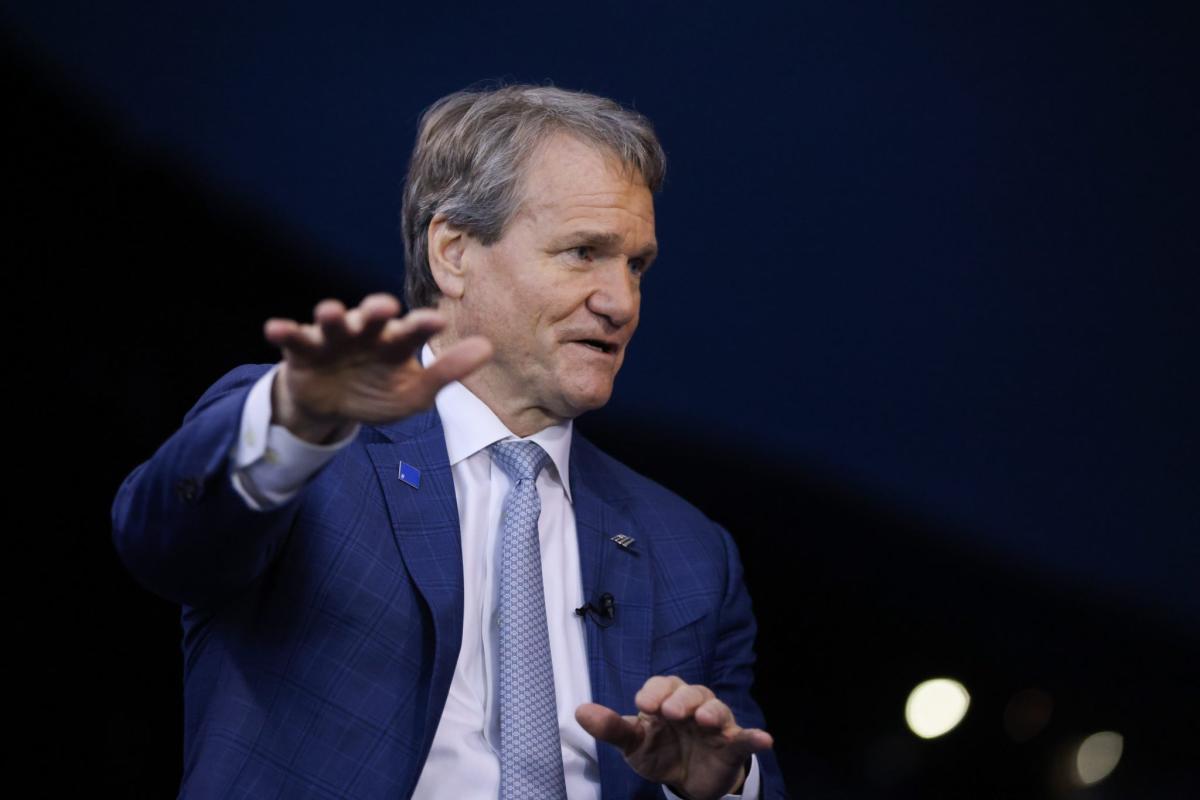

American consumers are being pulled in opposite directions right now—by rising prices that threaten consumption on one side, and by low unemployment and rising wages that are fueling growth on the other. But Bank of America predicts that the two forces, with the help of a push from the Fed, will reach equilibrium in 2025. Just what kind, though, not even CEO Brian Moynihan knows.
In an interview with CNBC at the Bank of America Securities Financial Services Conference on Wednesday, Moynihan held forth from the sidelines in Miami on how the pre-pandemic economic equilibrium was upset by inflationary shocks to both consumer prices and wages. But it was the timing of these shocks that sent consumer spending trends especially out of whack.
“Pricing went up, and wages went up—they just went up in two different cycles,” said Moynihan. “And so the wage growth had occurred early in the post-pandemic cycle … [and] added a lot to consumers’ firepower. The problem is [that] then, the pricing [increases] caught up with it. And now, we’re trying to get that back in equilibrium.”
BofA internal research data shows that consumer spending is leveling off, consistent with the disinflation path the Federal Reserve is targeting as it tries to stick a soft landing. Moynihan noted that BofA customers’ spending growth is currently hovering at between 4% and 5%, lower than the 10% figure this time last year.
The dance between consumer price inflation and wage increases is a key factor that’s generated instability in spending trends. While real expenditures have risen overall since the pandemic, they decreased slightly last spring and again last fall as prices continued to rise and the Fed refrained from starting to cut rates. But excitement around potential cuts to come later this year and consistently strong jobs numbers have added fuel to the economy.
“Yes, prices are up—but wages are up, unemployment’s down, [and] people are earning money,” said Moynihan. “And so, that’s the tug-of-war that’s going on. And they’ve moved the consumer to a different level of spending and capabilities. Will that hold is going to be an interesting question.”
Bank of America is predicting the Fed will start cutting rates later this year, the beginning of a path that would resolve the consumer spending tug-of-war by the end of 2025. But the finish line it sees doesn’t involve getting to the Fed’s 2% target rate.
Moynihan said his team’s view is that three cuts this year and four cuts next year would bring the economy “back into sort of equilibrium at the end of 2025, with a Fed funds rate in the … 3-to-3.5-ish [percent range.]”
That could spell trouble for the economy. A departure from the Fed’s longtime 2% rate target would send shock waves across the real estate, financial services, and lending sectors. But Moynihan said he was confident that consumers would adapt to a higher-base-rate economy, even though that process might take time.
“People [will] get used to mortgage rates of six, seven percent,” said Moynihan, talking to his interviewer, Jim Cramer, another commentator old enough to remember the housing market of the 1980s. “Jim, you well know, because you’re about as old as I am, so we’ve been around awhile, that that was what we used to think was a good mortgage rate.”
Mortgage rates soared to over 18% in the mid-1980s as the Federal Reserve ratcheted up interest rates in an effort to contain rampant inflation. Mortgage rates aren’t nearly that high today, but the current housing market—defined by a surge in financing costs after years of low to negative growth—shows some similarities, as both BofA Research and other commentators have flagged.
Moynihan then weighed in on the emergency monetary policy of cutting interest rates to near-zero after the Global Financial Crisis, which fueled what many commentators called an “everything bubble,” and how that suddenly ended amid Fed Chair Jerome Powell’s series of hikes in 2022. “It’s just that for 15 years, we had no real rate structure—you know, rate structure in the United States and around the world. And so people get used to lower rates. It’ll take time to do that. That’ll work its way through the system as rates normalize.”
This story was originally featured on Fortune.com
EMEA Tribune is not involved in this news article, it is taken from our partners and or from the News Agencies. Copyright and Credit go to the News Agencies, email [email protected] Follow our WhatsApp verified Channel









